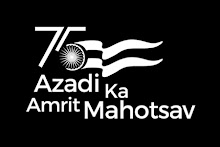The theme of the fifteenth South Asian Association of Regional Cooperation (Saarc) in Colombo, Sri Lanka, on August 2-3 this year is ‘Growth through partnership'. The positive note on which the next Saarc meet is expected to take off is heartening, especially for this troubled region beset, as it is with myriad problems such as political unrest, poverty and low trade and regional development.Removing trade and infrastructure barriers is crucial for the region's development and connectivity. Saarc was created in 1985, with the aim to evolve a regional cooperative framework. The bloc includes India, Maldives, Sri Lanka, Pakistan, Bhutan, Bangladesh, Nepal, Maldives and the recent member Afghanistan. Saarc countries, especially India, are important trading partners for the smaller members of the association. In 2005-06 Saarc members accounted for 57% of Nepal's exports and for 48% of its imports. The respective figures for Sri Lanka are 10% and 21%, for the Maldives 15% and 17%, and for Bangladesh 2% and 14%.
Promoting greater regional economic cooperation came on the agenda in 1991, when a decision was taken to establish a Saarc Preferential Trading Arrangement (SAPTA), whose main drawback was that it followed a commodity by commodity approach with regard to tariff liberalisation. Sapta did not manage to result in the liberalisation of trade and investment, as was the intention.
The signing of South Asian Free Trade Arrangement (SAFTA), in January 2004 was expected to help matters. Meanwhile, Safta is expected to become fully operational for all members only by 2016, when all members would have unilaterally reduced tariffs. Trade in services is, however, omitted by Safta-although the region has, as a whole has emerged stronger in export of services. Laying stress on infrastructure, a four-track policy can help navigate the way forward in terms of trade and investment. The first is on Indo–Pakistan trade, building on several key developments in 2008 such as improved air links. Agreement between India and Pakistan to renew direct cross-border trade would advance regional integration, strengthen trust and lay the foundation for progress in Safta. A second track is collaborative movements to improve trade facilitation customs, and ports,bilateral and plurilateral trade agreements with countries outside South Asia provide another track. India and Pakistan have embarked on a series of bilateral initiatives with other countries. While these cannot substitute for multilateral initiatives, they may offer some new market-widening opportunities.
The fourth track relates to Safta itself. Beginning the Safta discussions with a clear objective of increasing cross-border trade and new import competition in national markets is paramount. It has to be acknowledged that focusing on services and energy trade is not only possible, but there is need to recognise opportunities that could have a dramatic impact within a shorter timeframe while signalling to the international community that South Asia really is a region on an emerging growth curve.
Saarc member countries welcomed India's decision to give zero duty access to the least developed countries (LDCs) including Afghanistan, Bhutan, Bangladesh, Maldives and Nepal from January 1, 2008 one year ahead of target date. India has also decided to give "national treatment" to all the Saarc countries for participating in trade fairs held in India. Although the total intra-South Asian trade increased from $6 billion in 2000 to $20 billion in 2006, as a proportion of the region's trade with rest of the globe it stands at 4.8%, according to government figures. Also, while India's imports from Saarc was about 0.8% of her global imports in 2004, her exports to Saarc was 5.4% during the same period. Therefore, trade relations between the member nations of the bloc need to improve.
Although the mechanism for trade liberalisation has been put in place, countries of the region have to set aside their mutual distrust to place trade before political tensions. It may help to take a leaf out of the European Union experience. Who would have thought that after World War II, Europe would travel this far to be a peaceful, cohesive region, focusing on trade, and set aside the scars of the two world wars? Several European diplomats have told this reporter that in future South Asia could be an equally peaceful and prosperous region such as theirs. It also has a young population, which with the right skills can prove to be highly productive.
Meanwhile, developing countries impose higher tariffs on imports from other developing countries than industrial countries do on their imports. South Asian tariffs on developing imports are frequently five times as high as the rates imposed by industrial countries.
The benefits from ‘deep integration' of South Asian markets are likely to be more significant. Moreover facilitating trade through ports, customs and transport can be as important as cutting tariffs-and are central to deep integration. Safta has avoided making commitments to lower non-tariff barriers (NTBs) to promote intra-regional trade and lacks any special provision that would allow for the adoption of measures of deeper integration, such as granting of transit facilities, cooperation for development of transport and other forms of infrastructure, liberalisation of investment and trade in services, cooperation in the financial and monetary fields, and coordination, if not harmonisation, of macroeconomic policies.
Meanwhile, the Saarc meet in Colombo is expected to focus crucially on infrastructure deficiencies in the region and the need to bolster physical infrastructure to smoothen trade and investment flow and ensure connectivity.
Physical infrastructure in the south Asian region has to match that of the Asian giant, China's, which focused on putting physical infrastructure (such as transportation) in place, before becoming the economic engine that drove world markets for over a decade. It is important therefore, that the all-powerful South Asian governments show similar initiative in bolstering infrastructure and thereby leading to speedy development of trade and investment in the region.
4.7.08
Subscribe to:
Post Comments (Atom)



No comments:
Post a Comment